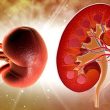Original title: Randomized Comparison of Clinical Outcomes between Intravascular Ultrasound and Angiography-Guided Drug-Eluting Stent Implantation for Long Coronary Artery Stenosis. Reference: Jung-Sun Kim et al. J Am Coll Cardiol Intv 2013. Article in press. Treating long lesions is difficult and the chance of instant thrombosis may be higher in these lesions. Coronary intravascular ultrasound (IVUS) can help in...
Appendage trans-catheter closure is equivalent to anticoagulation in fibrillated patients.
Original title: Percutaneous Left Atrial Appendage Closure for Stroke Prophylaxis in Patients With Atrial Fibrillation: 2.3-Year Follow-up of the PROTECT AF (Watchman Left Atrial Appendage System for Embolic Protection in Patients With Atrial Fibrillation) Trial. Reference: Vivek Y. Reddy et al. Circulation. 2013;127:720-729. Atrial fibrillation is the most common sustained arrhythmia in the world and its importance lies...
Future strategies to prevent restenosis and stent thrombosis
Original title: Endothelial cell repopulation after stenting determines in-stent neointima formation: effects of bare-metal vs. drug-eluting stents and genetic endothelial cell modification. Reference: Douglas G et al. European Heart Journal doi:10.1093/eurheartj/ehs240 Experimental models of vascular injury have shown that the rate of endothelial cell repopulation post-injury is a critical factor in determining subsequent neointima formation as well as...
Diabetics with multivessel, must keep waiting.
Original title: Strategies for Multivessel Revascularization in Patients with Diabetes. The FREEDOM Trial. Reference: Michael E. Farkouh et al. N Engl J Med 2012. DOI: 10.1056/NEJMoa1211585 This study was designed to determine the best revascularization strategy in diabetic patients with multivessel using current techniques of angioplasty (PCI) and surgery (CABG). Randomized 1:1 diabetic patients with injuries > 70%...
To discontinue clopidogrel after a year of infarction can be risky
Reference: Charlot et al. European Heart Journal 2012 (in press). International guideline recommendations approve giving dual antiplatelet therapy for a period of not less than 12 months after acute myocardial infarction. However, the benefit is unknown if the therapy is extended beyond 12 months. Perhaps its extension could be particularly useful in patients receiving pharmacological...
In patients with stroke history, Ticagrelor is superior to Clopidogrel
James SK, Storey RF, Khurmi N, et al. Ticagrelor versus Clopidogrel in Patients with Acute Coronary Syndromes and a History of Stroke or Transient Ischemic Attack. Circulation 2012. A sub-analysis of the PLATO study demonstrated similar superiority and the safety of ticagrelor in all patients, regardless of any previous history of stroke. Ticagrelor versus clopidogrel:...
Acute Myocardial Infarction After TAVI: Retrospective Analysis of >200,000 Implants
Coronary artery disease is common among patients considered for transcatheter aortic valve implantation (TAVI). With the expansion of the indication for TAVI to a population with lower surgical risk, and therefore younger, there has been a gradual increase in the incidence of coronary events. However, there is limited data on treatment strategy and outcomes in...
Cilostazol in Diabetic Patients with Endovascular Peripheral Revascularization: One Step Beyond Symptom Improvement
In patients with peripheral vascular disease (PVD), the presence of diabetes has been significantly associated with increased failure of critical lower limb ischemia (CLI) treatment, and higher incidence of amputation. This relationship has been attributed mainly to comorbidities and patient characteristics, concomitant peripheral neuropathy and marked microvascular alteration. Also, a high proportion of these patients...
Results of Zotarolimus-Eluting Stents vs Biolimus-Eluting Polymer-Free Stents After 2 Years. Are They Safe in Patients at High Risk for Bleeding?
The proportion of patients treated with coronary angioplasty who are at a high risk for bleeding is increasing. In this population, extended dual antithrombotic therapy increases the risk of bleeding. The 1-year randomized Onyx one study has demonstrated the non-inferiority of zotarolimus-eluting stents (ZES) vs. biolimus-coated polymer-free stent BioFreedom (DCS). Patients received dual-antiplatelet therapy (DAPT)...
In Multivessel Disease, When Should Renal Impairment Be Considered?
Cardiovascular disease is one of the main causes of morbidity and mortality in patients with advanced chronic kidney disease (CKD), and vice-versa. Both diseases share risk factors, including, but not limited to, diabetes, high blood pressure, smoking, dyslipidemia, and old age. As kidney disease develops, its severity grade has been linked to more thrombotic events...






